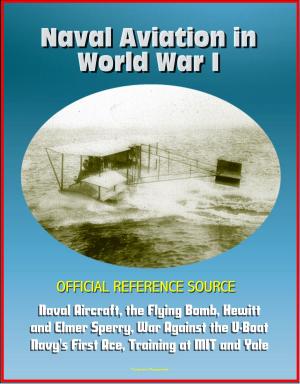Spies and Spying in the Civil War: The Amazing Stories of Elizabeth Van Lew, Harriet Tubman, Thaddeus Lowe, Saving Mr. Lincoln, Intelligence Collection in the North and South, New Tools, Overseas
Nonfiction, History, Americas, United States, Civil War Period (1850-1877)| Author: | Progressive Management | ISBN: | 9781301622122 |
| Publisher: | Progressive Management | Publication: | September 19, 2012 |
| Imprint: | Smashwords Edition | Language: | English |
| Author: | Progressive Management |
| ISBN: | 9781301622122 |
| Publisher: | Progressive Management |
| Publication: | September 19, 2012 |
| Imprint: | Smashwords Edition |
| Language: | English |
This unique compilation of three documents provides a fascinating look at the role of spies and intelligence in the conduct of the American Civil War.
The U.S. Army Military Intelligence History Sourcebook excerpt on the civil war covers many aspects of intelligence in the Civil War, including an illuminating depiction of Confederate espionage activities. The Civil War, like the American Revolution, was an occasion for widespread human intelligence operations, owing to the fact of an identical language and the shared cultural backgrounds of the protagonists. It was an easy matter to conceal allegiances and pass through the familiar countryside. It was also the brink of the modern era of warfare, employing new technologies like railroads, telegraphs, photography and lighter than air ships. This opened new avenues for intelligence exploitation. In the American Civil War the principal intelligence gathering arm of the U.S. Army was the cavalry. Early in the war, however, they could not be said to live up to the present-day motto of the Military Intelligence Corps, "Always Out Front." Rather the cavalry seldom ventured very far from its infantry and artillery support. Its sorties were marked by timidity, and therefore its usefulness as the eyes of the army was hooded. That is until the arrival upon the scene of a "Man on Horseback" - Brig. Gen. John Buford.
Intelligence in the Civil War, by the Central Intelligence Agency (CIA), focuses not on the battlefield of the tragic war, but on a battle of wits. Though the idea of centralized intelligence gathering was decades away, the age-old resistance to the idea was present even then. Neither side saw the need to create such intelligence organizations, but each side approached the idea of effectively acquiring intelligence in their own way. The Confederacy's Signal Corps, devoted primarily to communications and intercepts, included a covert agency, the Secret Service Bureau. This unit ran espionage and counter-espionage operations in the North. Late in the war, the bureau set up a secret headquarters in Canada and sent out operatives on covert missions in Northern states. The Union's Bureau of Military Information, unlike the Confederacy's Secret Service Bureau, operated for specific generals rather than for the Union Army itself. But here was born the idea of what would eventually become a centralized military intelligence division.
Each side still used age-old intelligence techniques, such as code-breaking, deception, and covert surveillance. However, into this modern war came two innovations that would endure as tools of espionage: wiretapping and overhead reconnaissance.
Finally, The Civil War at a Glance - organized yearly with authoritative chronologies - shows the course of the war from Fort Sumter in 1861 to Appomattox Court House and beyond in 1865. It is divided according to the two principal theaters in which the major military operations took place: (1) The Eastern Theater, roughly comprising the area east of the Appalachians in the vicinity of the rival capitals of Washington and Richmond, and (2) the Western Theater, primarily between the western slope of the Appalachians and the Mississippi River.
This unique compilation of three documents provides a fascinating look at the role of spies and intelligence in the conduct of the American Civil War.
The U.S. Army Military Intelligence History Sourcebook excerpt on the civil war covers many aspects of intelligence in the Civil War, including an illuminating depiction of Confederate espionage activities. The Civil War, like the American Revolution, was an occasion for widespread human intelligence operations, owing to the fact of an identical language and the shared cultural backgrounds of the protagonists. It was an easy matter to conceal allegiances and pass through the familiar countryside. It was also the brink of the modern era of warfare, employing new technologies like railroads, telegraphs, photography and lighter than air ships. This opened new avenues for intelligence exploitation. In the American Civil War the principal intelligence gathering arm of the U.S. Army was the cavalry. Early in the war, however, they could not be said to live up to the present-day motto of the Military Intelligence Corps, "Always Out Front." Rather the cavalry seldom ventured very far from its infantry and artillery support. Its sorties were marked by timidity, and therefore its usefulness as the eyes of the army was hooded. That is until the arrival upon the scene of a "Man on Horseback" - Brig. Gen. John Buford.
Intelligence in the Civil War, by the Central Intelligence Agency (CIA), focuses not on the battlefield of the tragic war, but on a battle of wits. Though the idea of centralized intelligence gathering was decades away, the age-old resistance to the idea was present even then. Neither side saw the need to create such intelligence organizations, but each side approached the idea of effectively acquiring intelligence in their own way. The Confederacy's Signal Corps, devoted primarily to communications and intercepts, included a covert agency, the Secret Service Bureau. This unit ran espionage and counter-espionage operations in the North. Late in the war, the bureau set up a secret headquarters in Canada and sent out operatives on covert missions in Northern states. The Union's Bureau of Military Information, unlike the Confederacy's Secret Service Bureau, operated for specific generals rather than for the Union Army itself. But here was born the idea of what would eventually become a centralized military intelligence division.
Each side still used age-old intelligence techniques, such as code-breaking, deception, and covert surveillance. However, into this modern war came two innovations that would endure as tools of espionage: wiretapping and overhead reconnaissance.
Finally, The Civil War at a Glance - organized yearly with authoritative chronologies - shows the course of the war from Fort Sumter in 1861 to Appomattox Court House and beyond in 1865. It is divided according to the two principal theaters in which the major military operations took place: (1) The Eastern Theater, roughly comprising the area east of the Appalachians in the vicinity of the rival capitals of Washington and Richmond, and (2) the Western Theater, primarily between the western slope of the Appalachians and the Mississippi River.















